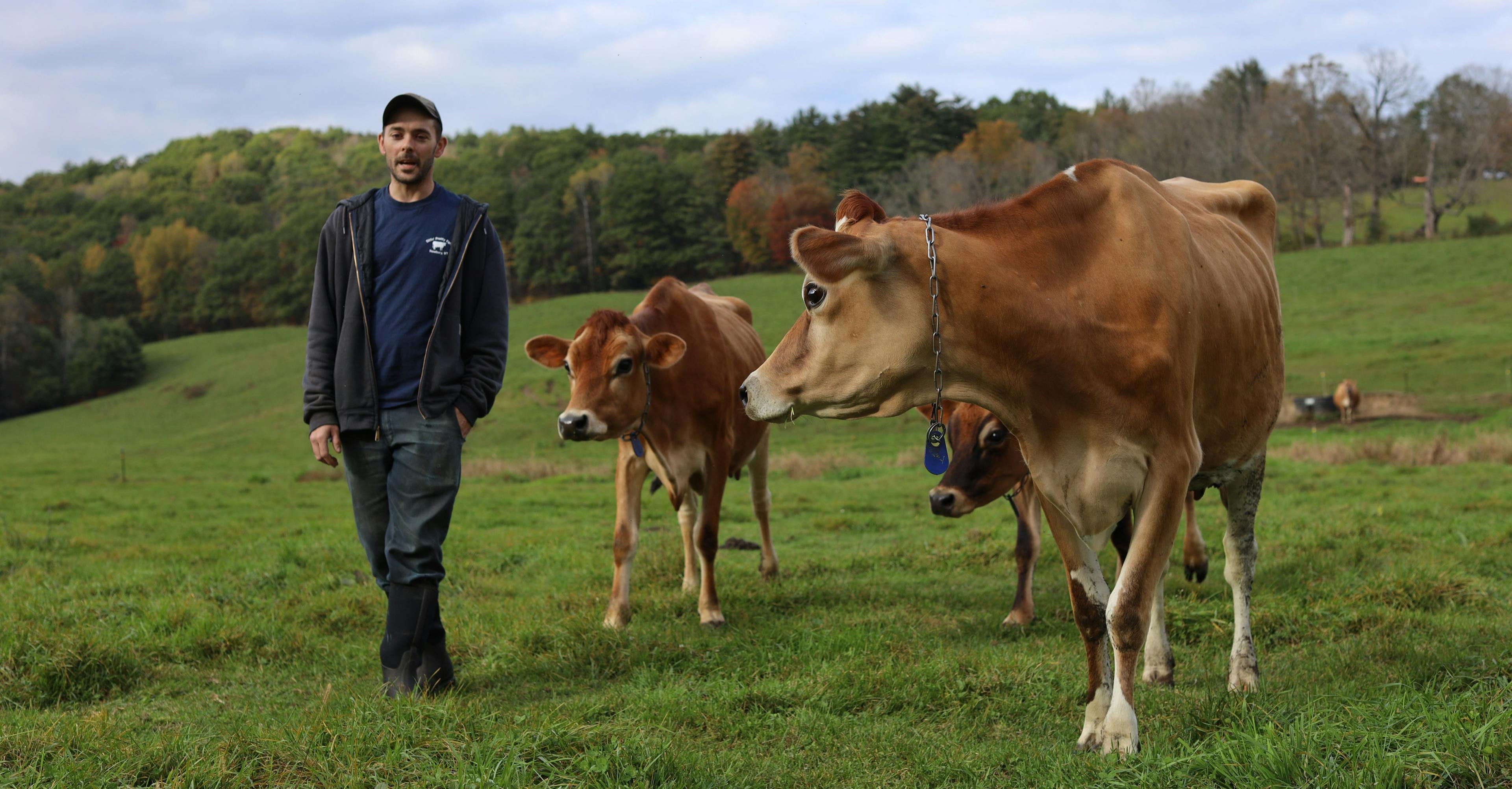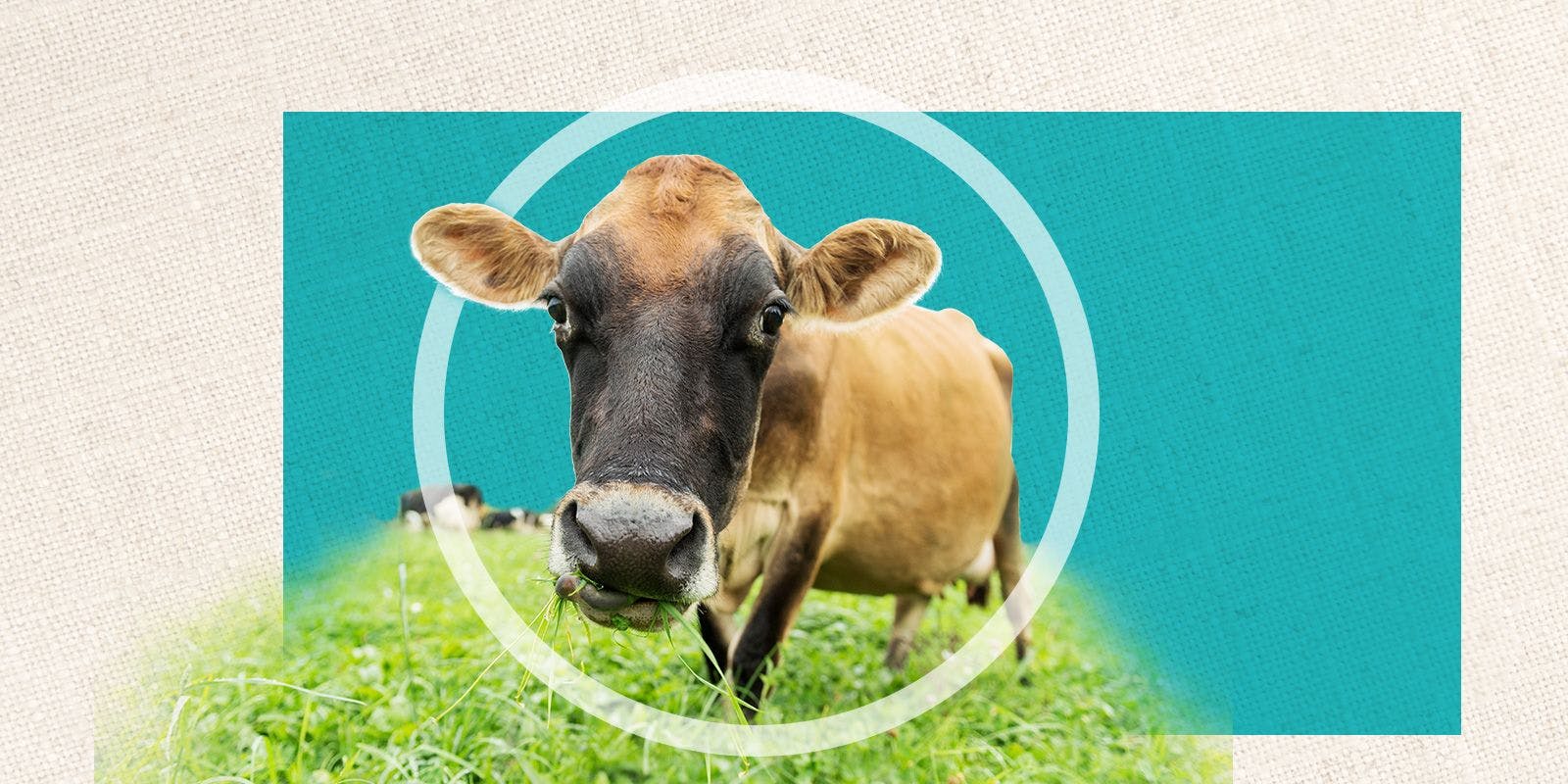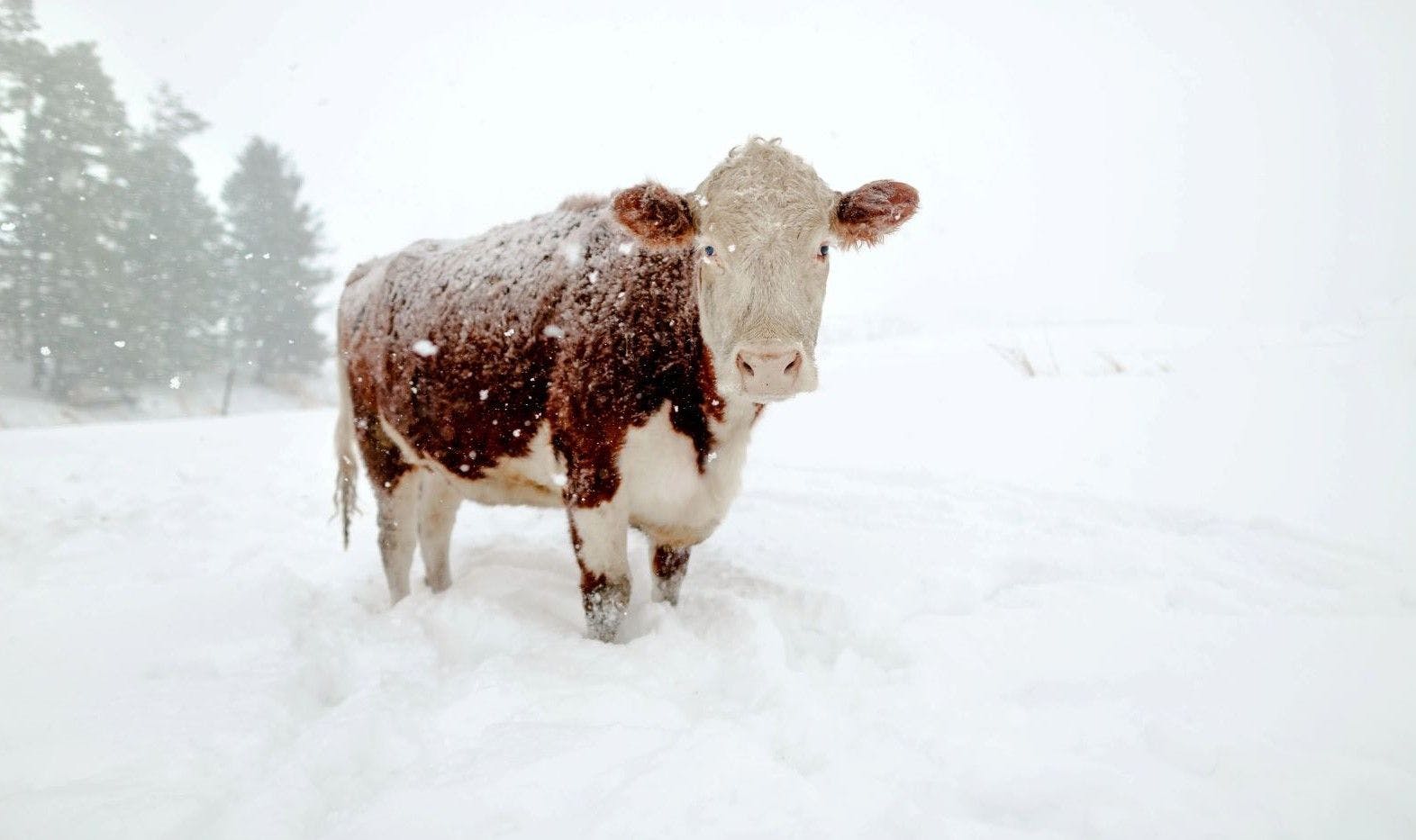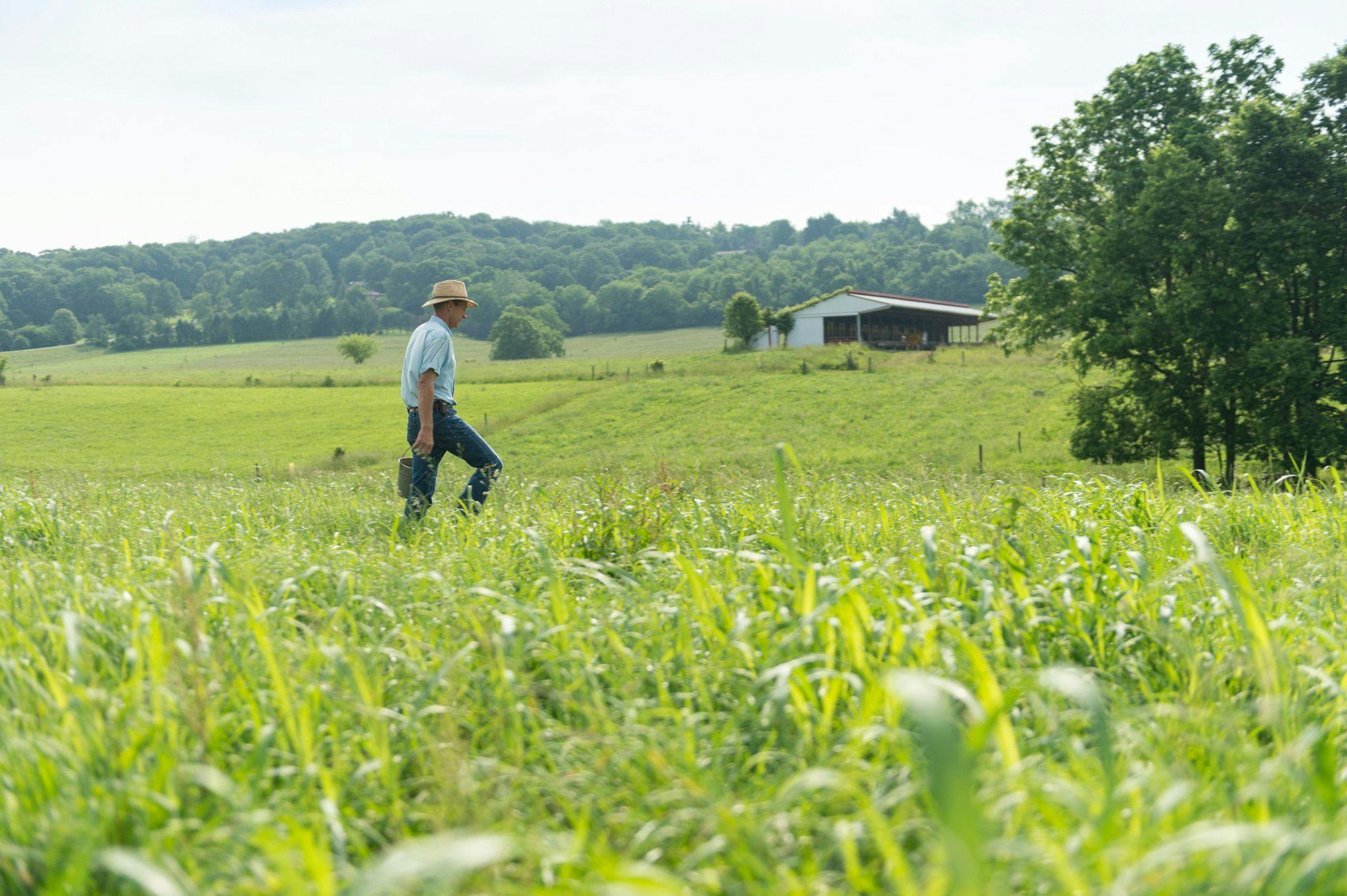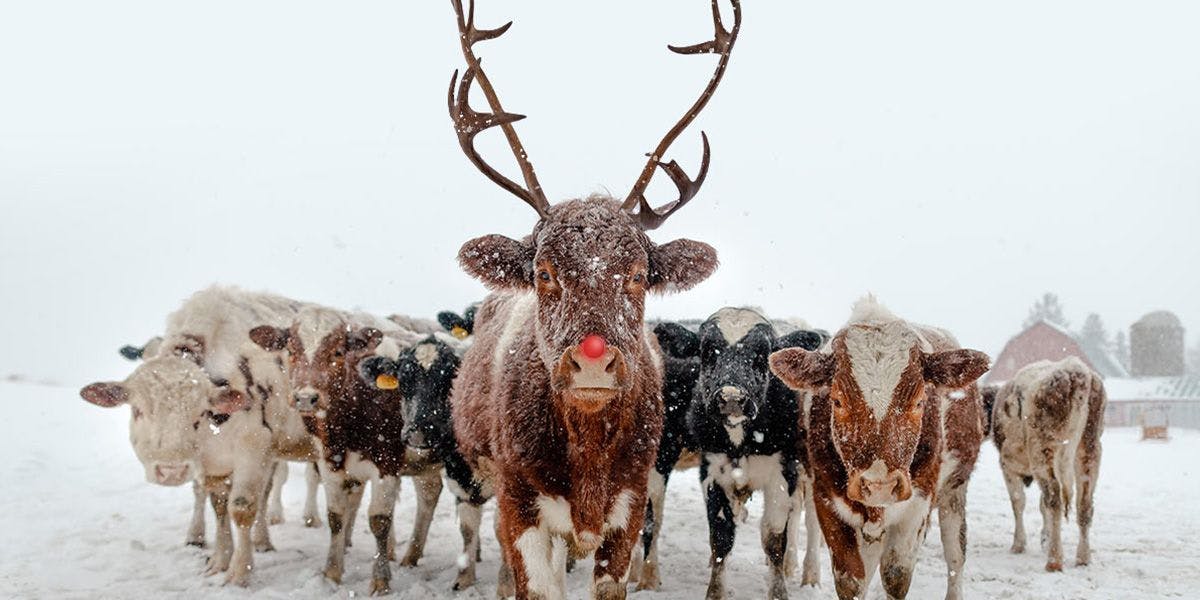
Farming
How Do Farmers Take Care of Dairy Cows?
Just like all of us, cows need some basics to get through the day. Maybe not morning coffee, but water and grass, shelter and care go a long way in making happy cows.
Most Organic Valley dairy cows are milked once or twice a day and often get special care when they’re in the milking barn.
On Organic Valley farms, not only are our farmers working to meet organic standards for their animals, they’re striving to go above and beyond to give their cows the best lives possible: lives with plenty of fresh air, bountiful pastures and special things to make their days a little more comfortable.
What Do Dairy Cows Eat Every Day?
Organic Valley cows spend a lot of time outside munching on pasture grasses. Some cows receive small grains.
On the Bedard farm in rural Vermont, a recent Thursday started at 5 after 5 with cows at the pasture gate ready to head toward the barn. When it’s nice out, the family’s 70 milk cows are outside nearly the whole day including overnight, said Patrick Bedard, who farms with brother Thomas and parents Nancy and Eugene.
Grazing allows cows to harvest their own meals. This way, they can get their own midnight snack if they feel like it. Organic standards call for dairy cows to have access to pasture at least 120 days out of the year. Organic Valley farmers try to maximize their grazing season, going as far beyond that as possible.
The cows at the Bedard farm usually graze until about Nov. 15.
To ensure cows get the best, freshest grass on a regular basis and the grass can grow back as quickly and healthily as possible, many farmers use intensive rotational grazing. This process has farmers divide large pastures into smaller sections called paddocks. A fresh paddock is often offered after each milking. Paddock size depends on how many cows are in the herd and how much they weigh, as well as the density of the plants in the pasture.
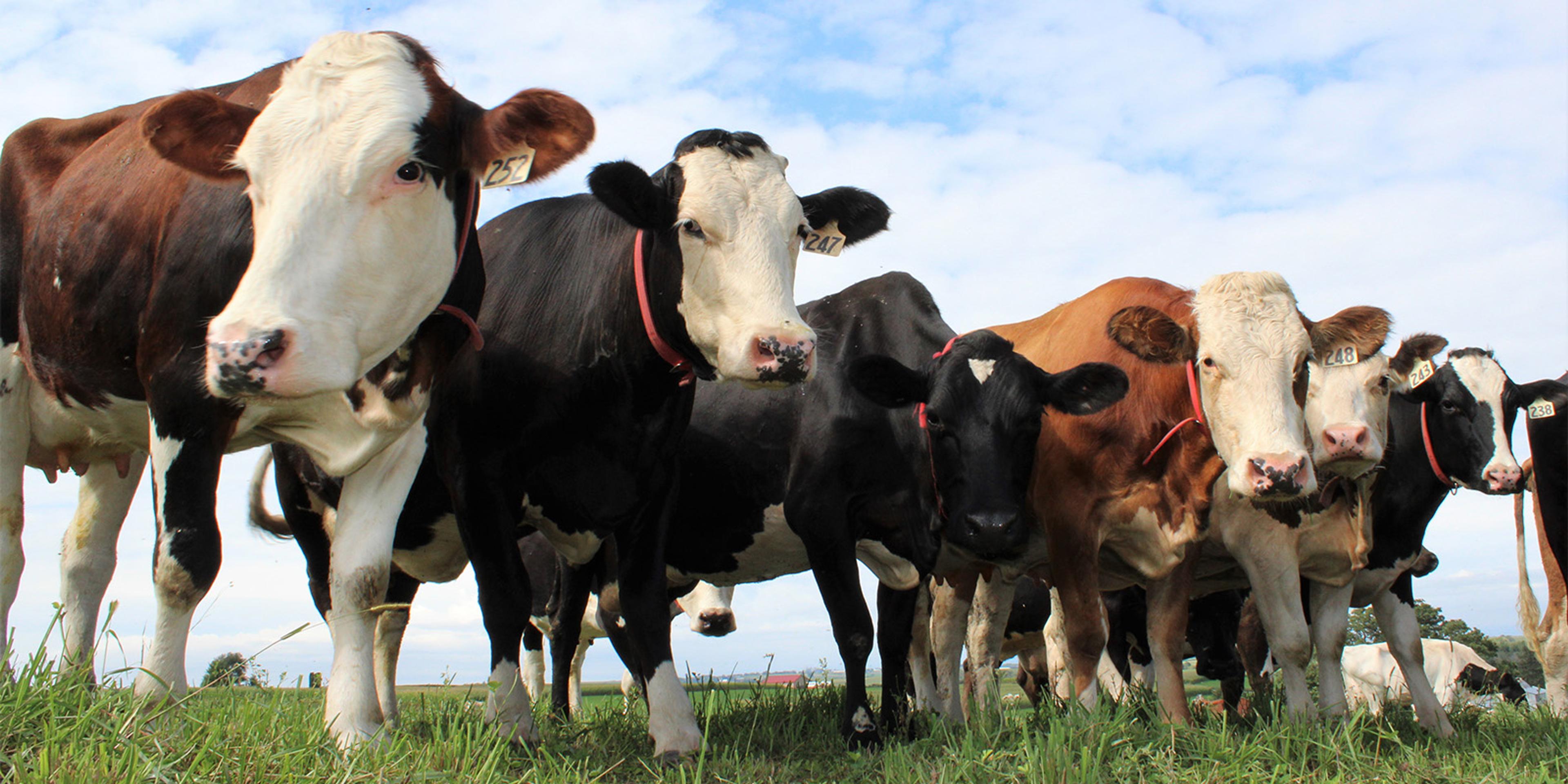
Cows at the Hershberger organic farm in Wisconsin.
Pasture plants are usually a mix of grasses, like fescue and brome, and legumes, such as alfalfa and clover. Farmers can use temporary fencing to create new paddocks for cows, so they put on a lot of miles over the course of the grazing season, whether by foot, horse, ATV, side-by-side or otherwise, to set their cows up for success.
In colder climates, fresh grass isn’t always available, so cows are fed stored feed. On the Bedard farm, they alternate between dry hay bales and fermented bales. Chopped forage can be mixed in, as well as minerals and vitamins for the cows to have a balanced diet.
Some cows receive some small grains, corn or soybeans as part of their diet, though Organic Valley Grassmilk® cows are sustained solely with forages. To ensure cows have access to as much feed as they like and to reduce waste, farmers push up feed throughout the day and dole out fresh feed usually twice daily.
Cows can get some interesting supplements to their diets. Some farmers use molasses to tempt cows to eat a little more than they might be otherwise inclined to eat. Others put out large blocks of salt for cows to lick on at their leisure as there’s not enough in their natural diet. Dried, ground kelp can be an excellent source of vitamins and minerals.
Calves catch on pretty quick, Bedard said. “They watch the others and figure out how to eat. They’re smart animals.”
The Importance of Fresh Water
Cows solely drink water. On average, they’ll drink 30 to 50 gallons of water a day, sometimes more.
“Clean water is a must,” Bedard said.
Water is always available at the barn, whether via a waterer, which operates similarly to a toilet tank, or a water tank. Many farms run water lines to their pastures.
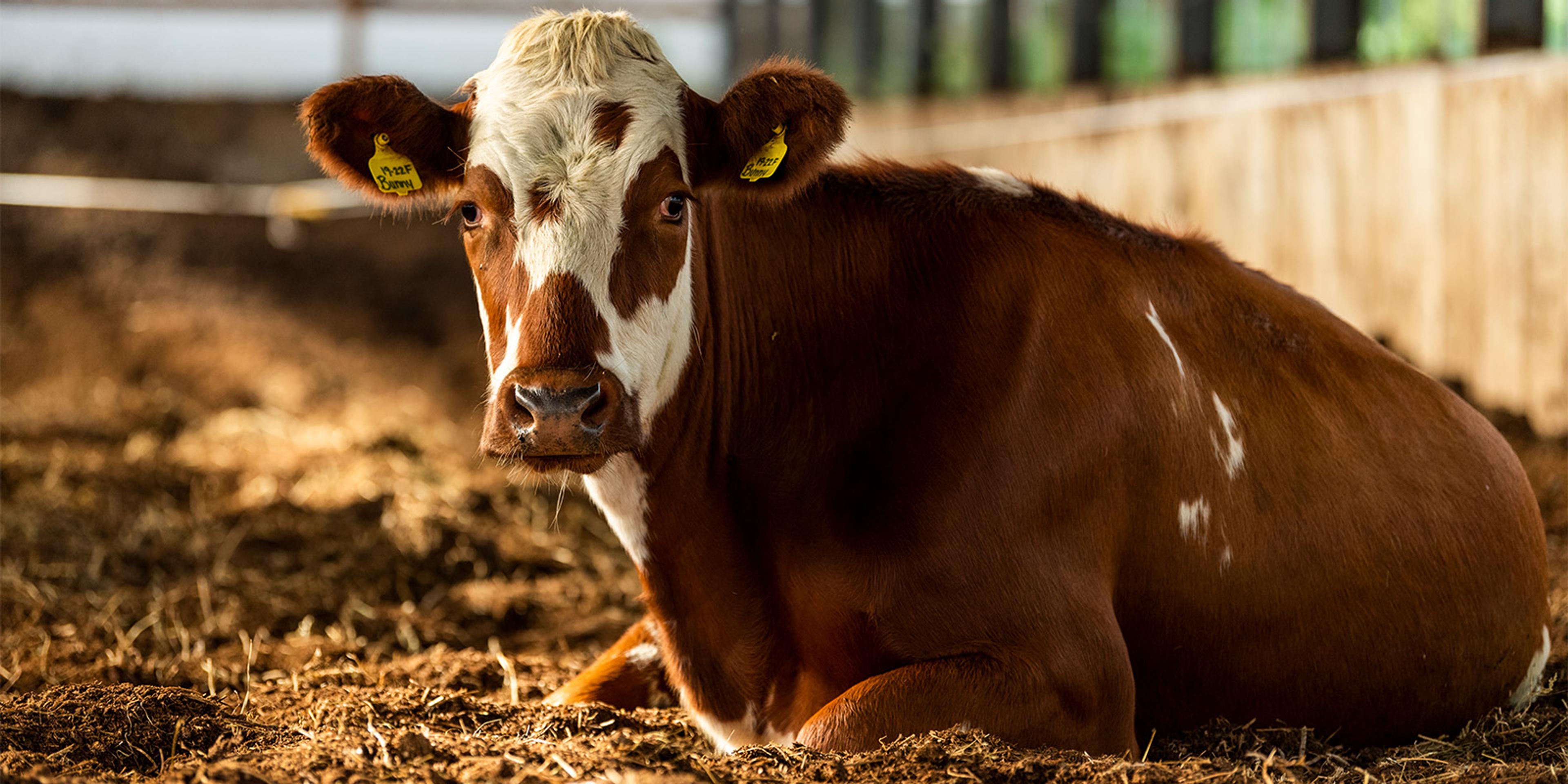
A cow relaxes at the Johnson farm in Wisconsin.
Where Do Cows Live?
When they’re not living their best life outside, cows can often be found sheltered in a barn. There are dozens of types of barns. Farmers may consider the size of their herd, how the barn is directionally situated and what kind of bedding is available to them and the like when choosing quarters for their animals.
The Bedard farm has a barn that’s open to a 50-acre pasture 24/7, Bedard said. After milking, the cows come out to fresh water, a bunker full of feed and a fresh coating of sawdust on their beds.
Farmers clean barns daily and the manure is spread on fields or piled onto a compost heap. Farmers put fresh bedding, often sawdust, straw or sand, down regularly in the barn.
Some folks are able to keep their cows fully outside year-round, whether due to favorable climate or creative means like bale walls for shelter.
Caring for Cows During Milking
Milking can be a time for farmers to really check in with their cows and get a sense of how they’re doing. Organic Valley cows are milked once or twice a day.
Bedard is a fan of what he calls the cow look-over upon their entering the milking parlor.
“It takes 2 minutes,” Bedard said. “We pay attention. They get used to seeing you and smelling you. If they’re comfortable with you, you can be comfortable with them.”
Reviewing the cows as they pass through can allow farmers to quickly confirm they are bright and alert, have shiny coats and full stomachs, and look comfortable. Farmers can also spot and take action on potential issues that may arise, like a cut or a limp.
After the cows are checked over, their udders get a wash and dry so they’re clean for milking. Milking itself takes 5 to 10 minutes. Afterward the cows may get a post-dip or lotion to help their udders stay healthy.
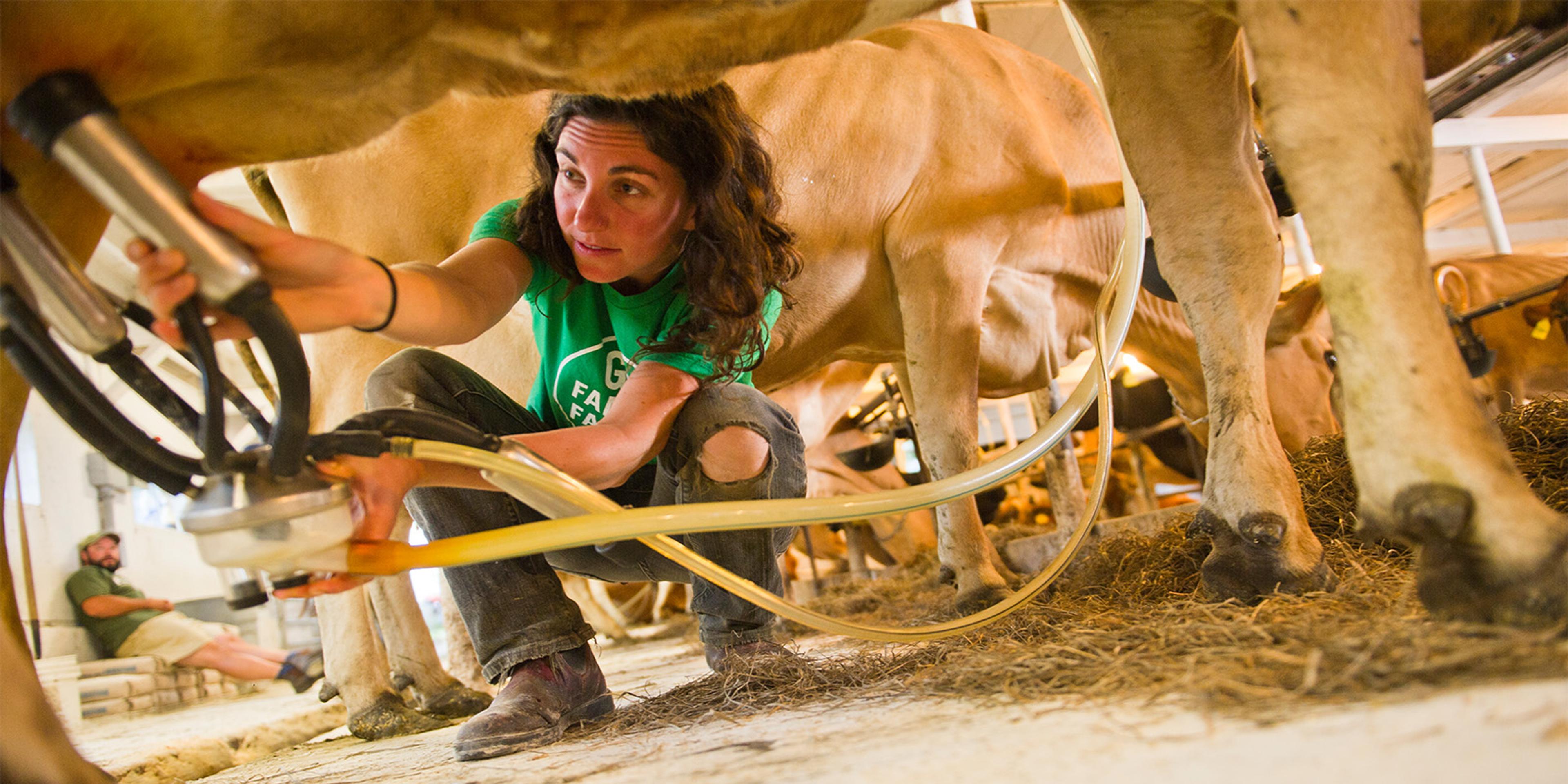
Melanie Webb milks cows on her organic farm in Vermont.
How Do You Keep a Cow Healthy?
In organic agriculture, being proactive is key to maintaining a healthy herd. Organic Valley farmers work with dairy cow breeds suited to grazing.
Time outside eating straight from the pasture is some of the best medicine. Farmers also test their animal feed to ensure cows are getting the highest quality diet.
Organic cows can receive routine vaccines and vitamin or mineral supplements if needed.
No antibiotics or growth hormones are allowed in organic farming. If a cow does come down with something, there are tools in the toolbox including herbal and homeopathic supplements as well as aspirin.
Some farms have a special hospital pen for cows that aren’t feeling well so they don’t have to walk too far. There are a small number of organic veterinarians across the country who are able to dole out cow health advice tailored to U.S. Department of Agriculture organic standards. Luckily, Organic Valley has veterinarians on staff to answer farmer questions or go to the farm to help solve animal health issues.
Another Key to Cow Health Is Hygiene
Most cows have bushy tails. While pretty and fluffy when clean and cared for, they can also easily become matted with mud. Some farmers give the tail hair a trim while others have been known to wash their cows’ tails.
Cows’ hooves grow just as people’s finger and toe nails do. They can grow 1 to 2 inches every year. So, they need to be trimmed occasionally. Specially trained hoof trimmers visit farms about twice annually to keep the herd’s hooves in shape. Some farms even provide a foot bath for cows to walk through to help maintain hoof health.

Cows line up to feel the goodness of a cow brush at the Meyer farm in Vermont.
Cows love a good brushing. Automated cow brushes can help cows groom where they cannot reach. It helps reduce stress while removing dried dirt and shedding hair.
Flies are a predominant pest to cows, so fly control is particularly important. There are fly traps and fly vacuums aimed at reducing fly populations on the farm so cows can live peacefully. Farmers also provide bird habitat. These birds help control pesky flies and bugs.
It’s In the Attitude
At the end of the day, cows will give back to you what you put out to them, Bedard said. Quality food, room to roam, a little affection when they need it, and they’re all yours. Though some cows are more direct about it than others.
“I’ve got one cow who, if you don’t pay attention and rub her head at the right time, she’ll nip you,” Bedard said. Her name is Nipper.
He figures he and his family can provide food, water, pasture access, comfortable shelter, veterinary care and the like, but it doesn’t mean much if they approach their work with a bad attitude.
“(Cows) really just need the best love and care you can give them,” Bedard said. “And pay attention to the nutrients going in. They’re almost like little kids.”
Lisa Mennenga is the daughter of Organic Valley dairy farmers from southeastern Minnesota. She lives in St. Paul with her husband and two sons and works in marketing at the University of Minnesota. Mennenga enjoys writing, card games, trying recipes and spending time with loved ones.
Related Articles
- Tags:
- animal care














